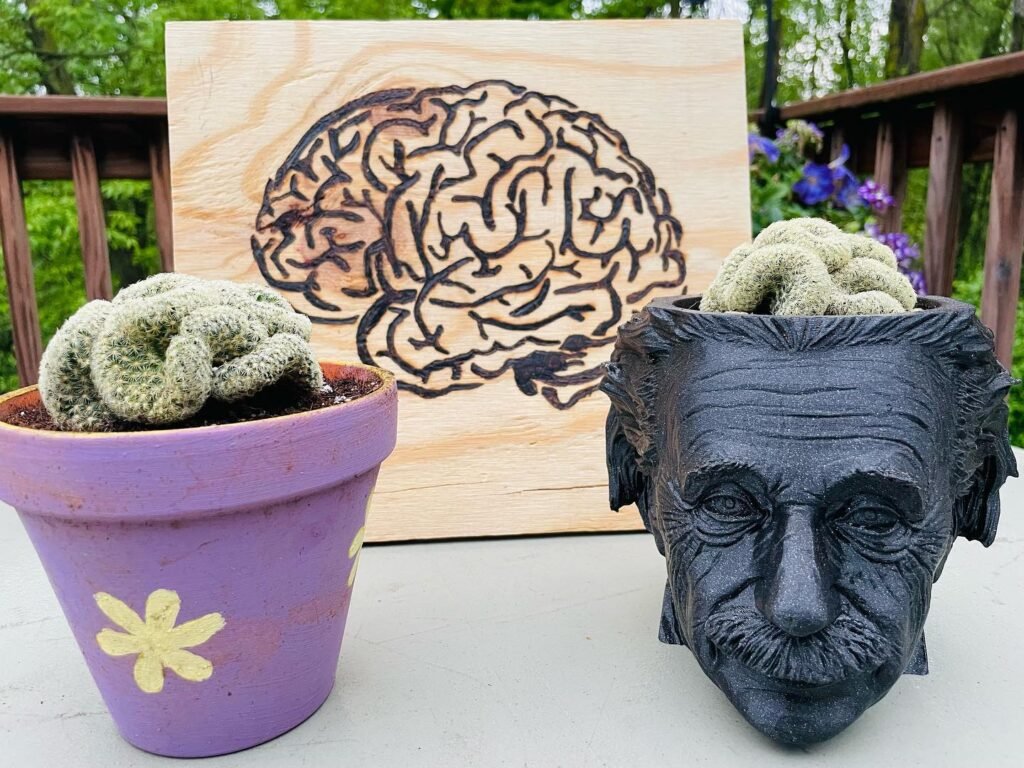On a casual visit to a friend’s house, nestled among a cosy indoor jungle, a peculiar plant caught my eye. Unlike the usual leafy greens, this one had a unique, brain-like structure. It was a brain cactus, and its intriguing appearance immediately sparked my interest, making it impossible not to take a closer look.
This extraordinary plant, known scientifically as Mammillaria elongata ‘Cristata’, isn’t just a marvel of nature with its convoluted form; it’s also surprisingly easy to care for. Ideal for adding a quirky twist to any indoor space, the brain cactus promises to be a conversation starter while blending seamlessly into your collection of houseplants.
If you’ve been tempted by the idea of nurturing something a bit unusual, the brain cactus might just be your perfect match. In this piece, we’ll explore how to care for this fascinating plant, covering everything from the right soil mix to its light and watering needs. Whether you’re a seasoned gardener or just starting to dip your toes into the world of indoor plants, you’ll find that keeping a brain cactus thriving is a rewarding venture.
Appearance of Brain Cactus

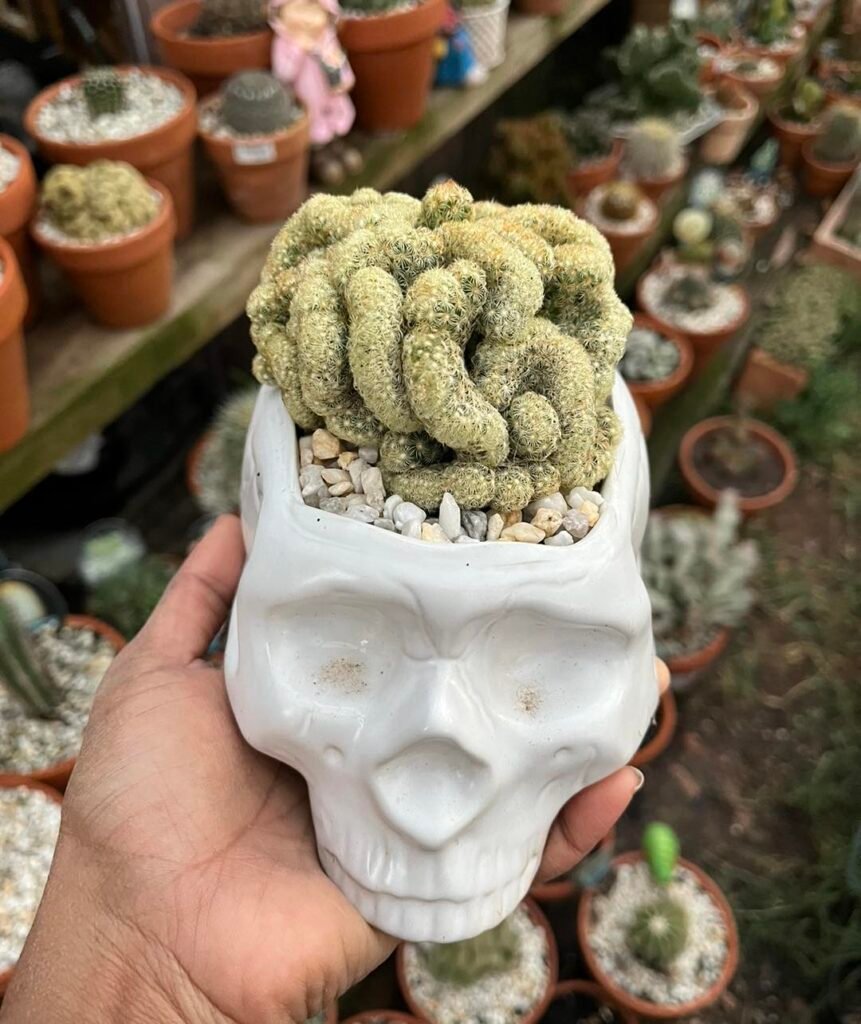
The brain cactus, also known by its botanical name, Mammillaria elongata ‘Cristata’, is an extraordinary succulent that captures the imagination with its brain-like appearance. Unlike the straight, spiky appearance of traditional cacti, the brain cactus features green stems that intricately twist and fold into each other, resembling the complex folds of a human brain.
This peculiar formation is the result of a mutation known as fasciation, where the normal growth point of the cactus changes from a single point to a line, causing the stem to expand in width and create these unusual, brain-like patterns. Adorned with delicate white spines, these stems provide a striking contrast against the deep green of the foliage, enhancing its brain-like illusion.
It’s not just its appearance that makes the brain cactus stand out; this plant is also a fantastic conversation starter. Its unusual shape and the story behind its development can intrigue visitors, sparking discussions about nature’s quirks. Moreover, its distinctive look adds a touch of the extraordinary to any room, making it a perfect choice for anyone looking to bring a bit of nature’s oddity into their home.
The brain cactus’s combination of unique beauty, intriguing growth patterns, and low maintenance requirements makes it a cherished addition to any indoor plant collection. Whether you’re an experienced gardener or new to the world of houseplants, the brain cactus promises to bring a sense of wonder and curiosity into your home.
 Placing a Brain Cactus in a skull pot can transform it into a striking Halloween decoration. Besides its unique look, this cactus is a fantastic conversation starter, blending eccentric beauty with a touch of whimsy.
Placing a Brain Cactus in a skull pot can transform it into a striking Halloween decoration. Besides its unique look, this cactus is a fantastic conversation starter, blending eccentric beauty with a touch of whimsy.
Light Requirements for Brain Cactus

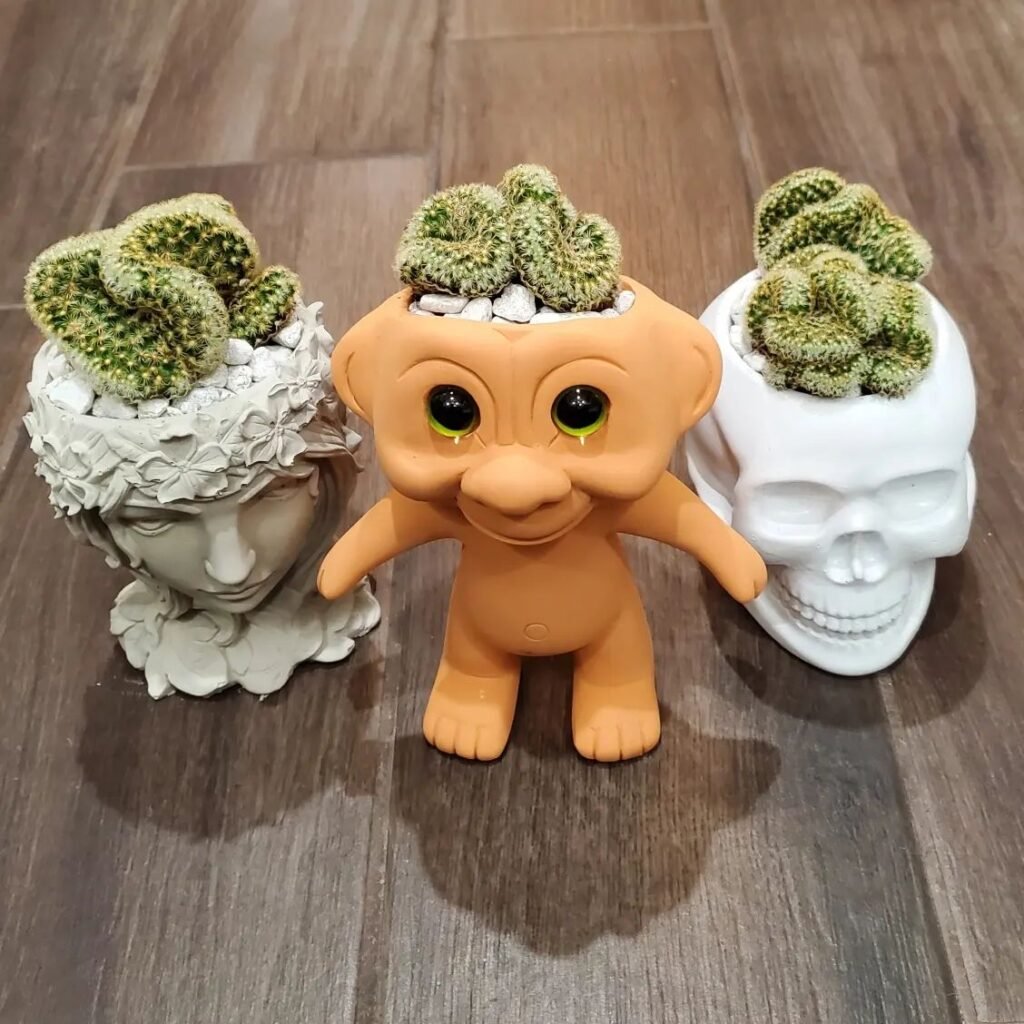
Caring for your brain cactus means knowing its light needs. Most succulents, including the brain cactus, love bright, indirect light. You should place it near a window. There, it gets a few hours of sunlight every day. This helps the plant grow well.
But, be careful with direct sunlight. Too much direct sun can damage the brain cactus. It might get scorched. So, it’s smart to balance sunlight and shade. Watch how your plant does and move it to get the best light. This helps it grow perfectly.
The unique look of the brain cactus depends on light too. Not enough light can make its stems stretch out. Then, it loses its cool brain-like shape. So, getting the right mix of light and shade is key. It keeps your brain cactus healthy and looking great.

Watering Tips for Brain Cactus

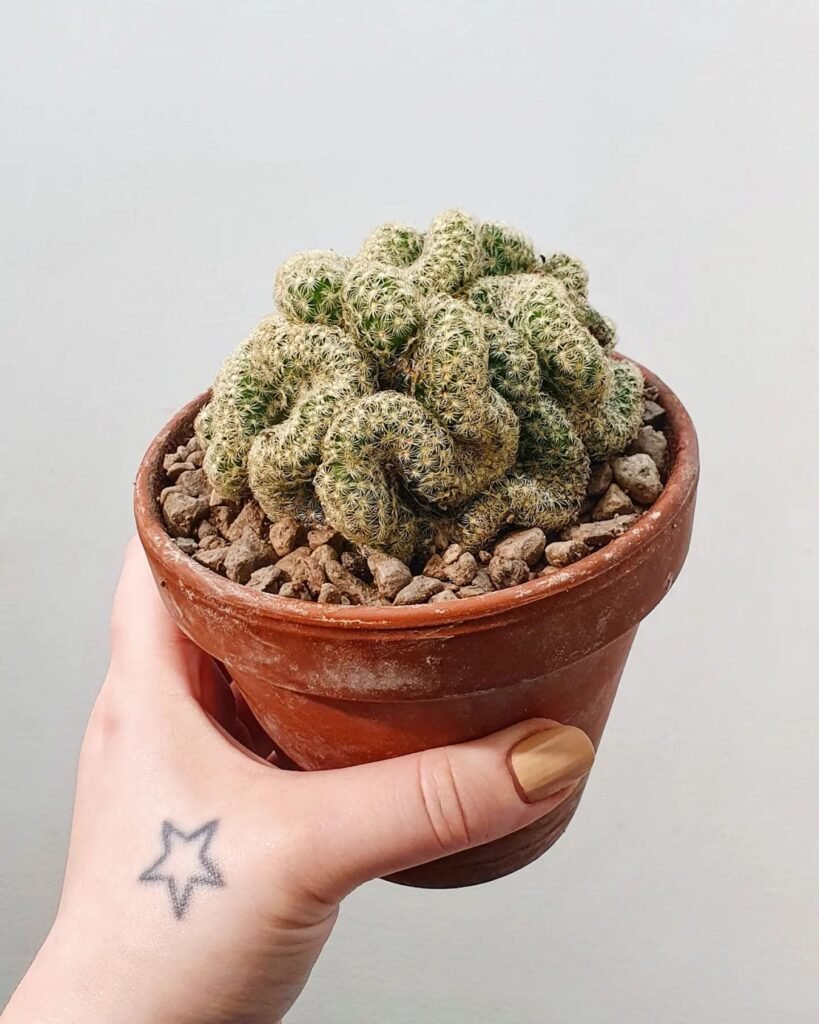
Proper watering is vital for the health of brain cactus, a spectacular desert succulent. It needs little water and specific care is essential for its growth and longevity.
Allow the Soil to Dry Completely
Letting the soil dry out fully between waterings is key for brain cactus. It thrives in dry conditions, and too much water can cause damage. Always check the soil first before watering.
Water Sparingly During Warmer Months
In the warm months, brain cactus needs even less water. Water it once every 2-3 weeks. This schedule helps avoid too much water, which can be harmful.
Reduce Watering in Winter
During winter, the cactus enters a dormant phase, needing even less water. Cut back to watering monthly, or less often. This rest period is critical for its health.
Always err on the side of too little water with succulents like brain cactus. These plants can save water in their leaves and stems. By keeping to these guidelines, you’ll help your brain cactus stay vibrant and healthy.

Fertilizing and Soil for Brain Cactus


Looking after your brain cactus means choosing suitable soil and nutrients. This cactus likes well-draining soil that feels like its desert home. You can pick between a store-bought cactus mix or making your own.
If you go for a store mix, find one made for cacti. They often mix potting soil, perlite, and coarse sand. This helps water drain well, stopping too much moisture that’s bad for your cactus.
Or, mix your soil with equal parts potting soil, perlite, and coarse sand. Making your mix lets you adjust it for what your cactus needs.
Talking about feeding your cactus, it’s not a must. Your cactus can pull what it needs from the soil, so extra feeding is optional.
If you do feed it, choose a diluted, low-nitrogen fertilizer for cacti. It gives your cactus what it needs without too much growth. Apply it lightly, as the instructions say.
When fertilizing your brain cactus, remember less is often more. Aim to give enough nutrients for growth but not too much. Watch how your plant looks and change feeding as needed.

Pruning and Maintenance of Brain Cactus
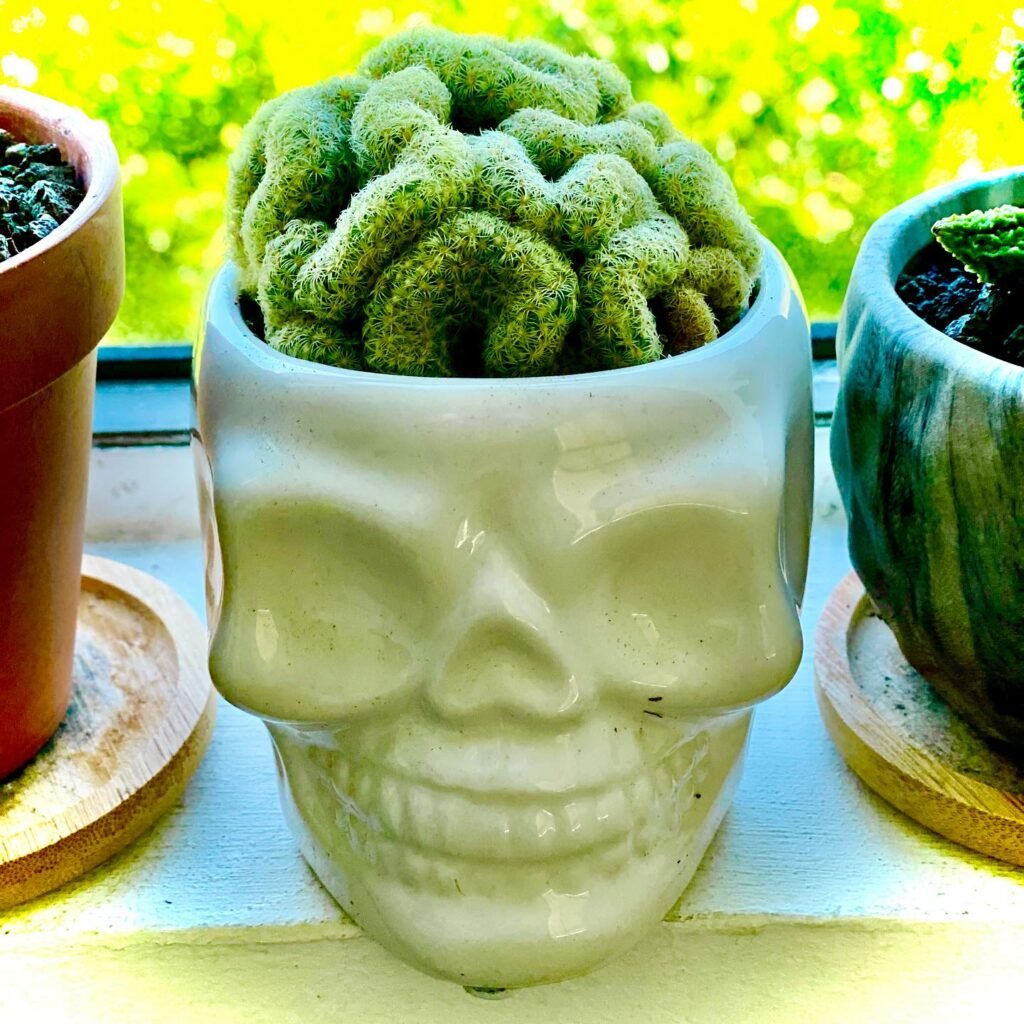
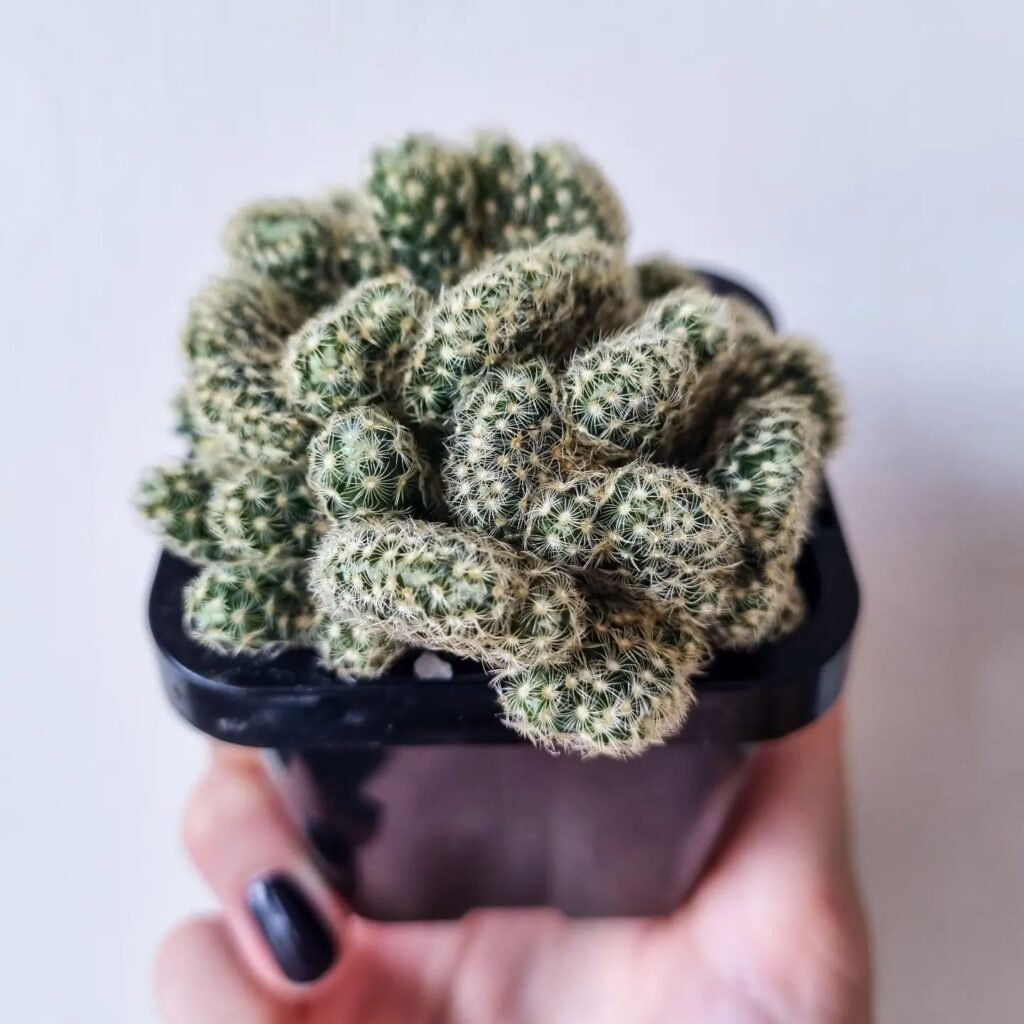
Brain cactus care doesn’t require much pruning. To keep your cactus looking great, follow these simple tips. Remove dead or damaged stems with clean, sterilised pruning shears. Cut them at the base. But, don’t cut healthy stems unless you must. They won’t grow back from the cut.
Regular maintenance is key for a healthy brain cactus. Check your plant for pests or diseases now and then. Look out for mealybugs and rot. If you find any, deal with them quickly to stop more damage.
Following these care tips will help keep your brain cactus healthy and looking good. Your plant can thrive for many years with proper pruning and upkeep.

Propagating Brain Cactus


To start propagating brain cactus, first, pick a healthy stem from your main plant. Use sterile pruning shears to make a clean cut below a node. Then let the cutting dry out for a few days to form a callous.
After the callous forms, it’s planting time. Use well-draining soil to avoid root rot. Water the cutting a little to keep it from getting too wet.
As it begins to root, water it a bit more. This helps grow a strong root system. It usually takes several weeks for new roots and stems to show. Being patient is important during this time.
Giving the right care makes propagating brain cactus rewarding. It’s a joy to watch cuttings turn into new plants. Just remember they need proper conditions and time to do well.

Repotting Tips for Brain Cactus
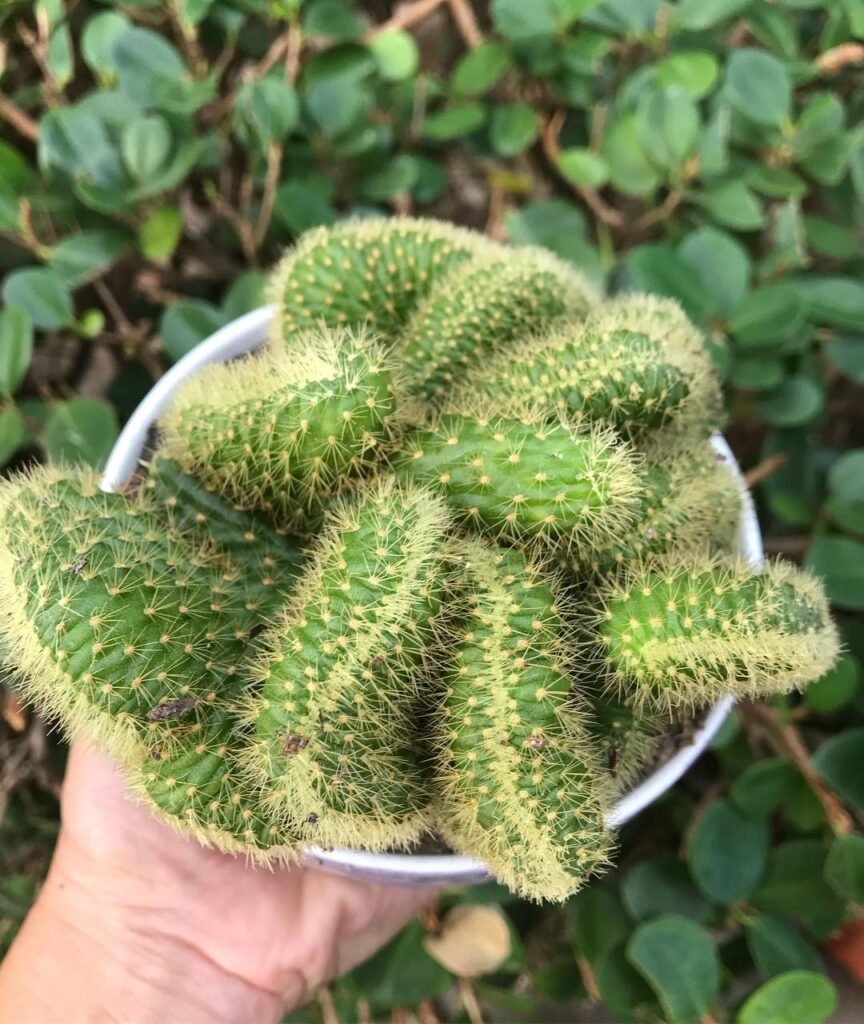
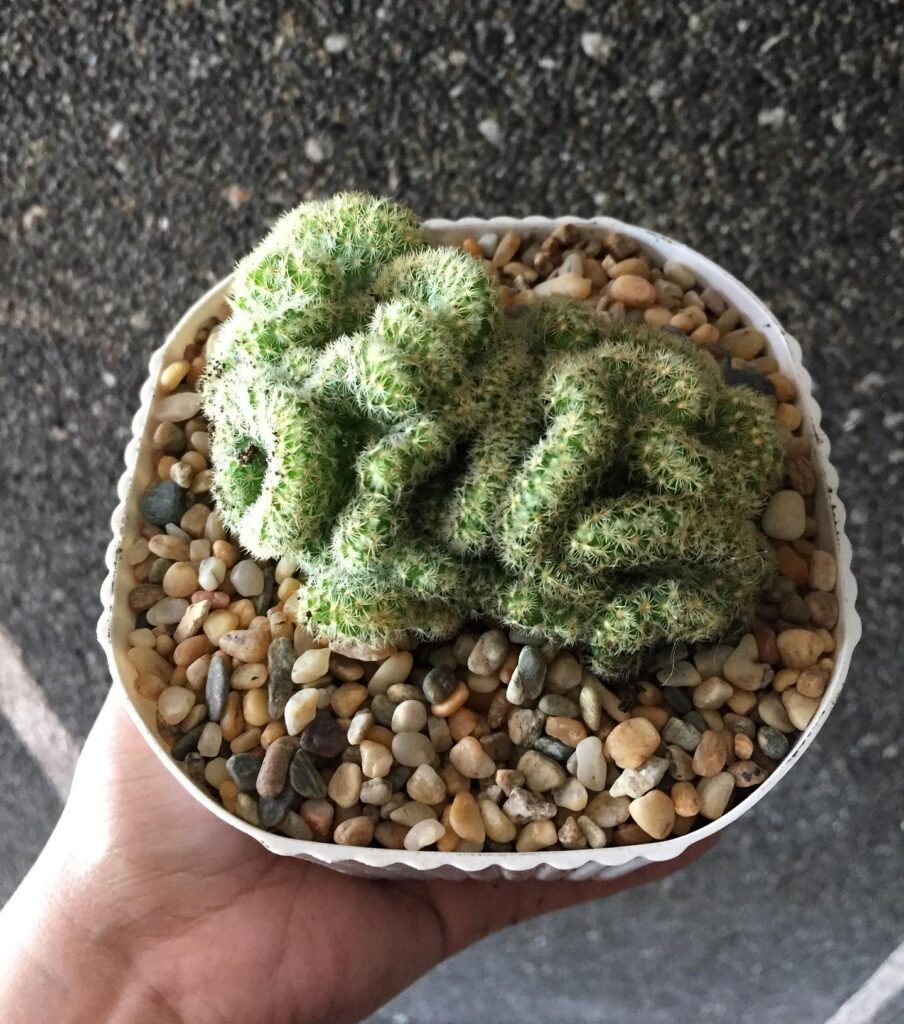
Repotting brain cactus is vital for its growth. It’s needed when the plant outgrows its pot or when the soil gets too compact. Here are some tips to ensure a smooth repotting:
- Choose the right pot: Pick a pot that’s a bit bigger than the current one. This gives the roots space to grow. It should have holes at the bottom to avoid water from collecting.
- Handle with care: Brain cacti are spiky and can hurt you. Be careful when you repot. Wear gloves or use a towel to avoid the spines.
- Remove from the current pot: Take the cactus out of its existing pot with care. Tap the pot’s sides to help loosen the soil and roots. Ease the plant out, supporting its base.
- Loosen the roots: Check the root ball and gently massage the roots. This encourages growth and helps roots spread in their new home.
- Plant in fresh soil: Use new, well-draining soil in the new pot. Put the brain cactus in the middle and fill around it with soil. Press down the soil lightly to keep the plant in place.
- Allow for adjustment: Water the brain cactus a little after repotting. Too much water can harm it. Slowly increase watering as the cactus gets used to its new pot.
Follow these repotting steps to help your brain cactus thrive in a new pot. Make sure you pick the right pot, handle your plant gently, and loosen the roots. Also, take care with watering to ensure a successful move.
 Did you know? The Brain Cactus is a rare natural mutation, creating its unique, brain-like appearance. This fascinating plant isn’t just a quirky decorative piece but also a testament to nature’s unpredictability, making it a rare gem in wild habitats and a prized collector’s item.
Did you know? The Brain Cactus is a rare natural mutation, creating its unique, brain-like appearance. This fascinating plant isn’t just a quirky decorative piece but also a testament to nature’s unpredictability, making it a rare gem in wild habitats and a prized collector’s item.
Additional Tips for Growing Brain Cactus
Here are some additional tips to help you successfully grow and care for your brain cactus:
- Place the brain cactus in a well-ventilated area: This will help prevent excessive moisture buildup and keep the plant healthy.
- Avoid temperature extremes: Keep it at a steady temperature of 70-75°F (21-24°C) during the day. At night, it should be above 15°C. Brain cacti do well in these moderate temperatures.
- Protect from frost and freezing temperatures: If your brain cactus is outdoors, bring it inside during the winter. Or, protect it from cold with proper insulation. This helps prevent frost and freezing damage.
- Monitor for signs of pests: Watch for pests like mealybugs. Treat any infestation quickly to stop damage. Checking the plant often keeps it healthy.
- Avoid overhandling the plant: The spines can cause injury or irritation. Be gentle and touch it as little as possible to avoid getting hurt.
Helpful Videos about Brain Cactus
Check out these great videos I found on looking after the Brain Cactus. They’re full of simple tips that make it easy to care for this cool plant. Perfect if you’re just starting out with gardening! Feel free to check them out.
- Brain Cactus (Mammillaria elongata ‘Cristata) Plant Care Guide
- Crested Brain Cactus┃Mammillaria Cristata
FAQ about Caring for Your Brain Cactus

Curious about the top tips for caring for your Brain Cactus? You’ve landed in the right place! I’ve compiled all the key questions to guide you through looking after this intriguing plant. From figuring out the perfect watering schedule to solving the usual troubles, you’re in good hands.
The Brain Cactus, also known as Mammillaria elongata ‘Cristata’, is a unique, curiously shaped succulent. Its convoluted, brain-like appearance comes from a mutation, making it a fascinating addition to any plant collection.
It thrives in bright, indirect sunlight. In the UK, a south-facing window is ideal, especially during the shorter days of winter. However, during the summer, you might need to shield it from the most intense midday sun to prevent sunburn.
Brain Cactus prefers warmer temperatures but can withstand cooler conditions. Indoors, keep it in a room that’s at least 10°C. Avoid placing it near draughty windows or doors during the winter months.
A well-draining cactus mix is essential to prevent root rot. You can make your own by mixing two parts sand or perlite with one part regular potting soil, ensuring good drainage and aeration.
Water sparingly. Allow the soil to completely dry out between waterings. In summer, this might mean watering every two weeks, while in winter, once a month or less. Overwatering is a common mistake, so err on the side of too dry rather than too wet.
Yes, but sparingly. Feed it with a cactus-specific fertilizer diluted to half the recommended strength, once at the beginning of spring and once in summer. Avoid feeding during autumn and winter when the plant is dormant.
Choose a pot only slightly larger than the current one, with adequate drainage holes. Repot in spring, carefully transferring the plant and filling in around it with fresh cactus mix. Wait a week before watering to let any root damage heal.
Yellowing can indicate overwatering, poor drainage, or too much direct sunlight. Check the soil and light conditions, adjusting as necessary to address the issue.
Brain Cactus can be propagated from cuttings. Use a clean, sharp knife to take a cutting, allow it to callous over for a few days, then plant it in moist cactus mix. Keep it in indirect light until roots develop.
Drooping or limpness often indicates underwatering or a need for repotting. Check if the soil is dry; if so, water the plant. If the pot is too small or the soil is compacted, consider repotting.
It can during the warmer months, but it’s sensitive to cold and should be brought indoors before temperatures drop below 10°C.
Inspect regularly for signs of mealybugs, spider mites, and scale. Treat infestations with a cotton swab dipped in alcohol or use an appropriate insecticidal soap.
It prefers low to moderate humidity levels, which is generally in line with typical indoor conditions in the UK. Avoid placing it in overly humid rooms, like bathrooms or kitchens.
It enjoys some direct sunlight but can get sunburned if exposed to intense midday sun, especially behind glass windows. Use a sheer curtain to diffuse direct sunlight.
No, let the flowers bloom and fall off naturally. They’re a healthy sign of a happy plant and do not drain energy from the cactus.
Ensure it gets enough light and follows a natural seasonal cycle, with cooler and drier conditions in winter. This can help stimulate flowering in the spring.
It’s not recommended as it may retain too much moisture. Always opt for a cactus-specific mix or amend regular soil with sand or perlite for better drainage.
While not as spiky as some cacti, it’s still best to handle with care. Use gloves or wrap the cactus in a thick layer of newspaper to avoid any injury when repotting or moving it.
While the Brain Cactus isn’t known to be toxic, its texture and shape might tempt curious pets. To be safe, keep it out of reach, especially since any damage can stress the plant and spoil its unique appearance.
Shrinking may indicate dehydration. If the cactus appears shriveled and is lightweight when picked up, it likely needs water. Check the soil moisture and adjust your watering routine accordingly.
A purplish hue can indicate stress, possibly from temperature extremes or too much sunlight. Evaluate the plant’s environment and make adjustments. A slight color change can also be part of natural variations, especially under cooler temperatures, but it should not cover the whole plant.
I hope this guide shines a light on the ins and outs of Brain Cactus care, making your gardening journey smoother and more enjoyable. Remember, every plant has its unique personality, and getting to know yours is part of the fun. Should you have any more questions or need a bit of advice, don’t hesitate to reach out. Happy gardening!
Enjoy the Unique Beauty of Brain Cactus
Having a brain cactus is a rewarding journey. This unique plant brings intrigue and beauty indoors. Its resemblance to a brain and wavy green stems make it a standout piece.
Looking after your brain cactus properly is key. Make sure to follow guidelines on light, water, and fertilization. Keep it in bright but indirect light to avoid leaf burn.
Brain cacti need less water as they are desert plants. Let the soil dry fully before watering again. Use well-draining soil and water lightly, especially in hot months. Feed it with a low-nitrogen fertilizer designed for cacti and succulents.
Regular maintenance keeps your brain cactus healthy. Trim any dead stems and check for pests often. You can also propagate to get more plants. Use a bigger pot with good drainage when repotting to help it thrive.
Add a brain cactus to brighten your indoor garden. With proper care, its unique beauty will delight you for years.

